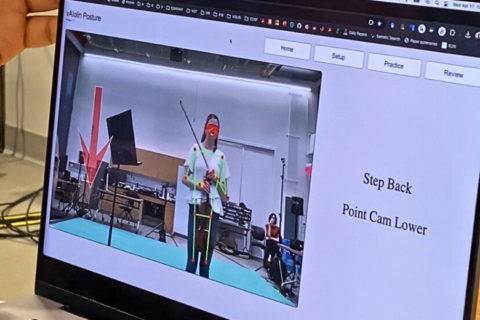This article was republished with permission from WTOP’s news partners at Maryland Matters. Sign up for Maryland Matters’ free email subscription today.
This content was republished with permission from WTOP’s news partners at Maryland Matters. Sign up for Maryland Matters’ free email subscription today.
Leading critics of Maryland’s plan to build toll lanes along the Capital Beltway and Interstate 270 suggested on Monday that unexplained changes in forecasted travel times appear to have been driven by a desire to make the project appear attractive to the public and the federal government.
In a letter to a top U.S. Department of Transportation official, Maryland Transportation Opportunities Coalition chair Ben Ross said his analysis of newly released data uncovered “numerous anomalies” that appear to be of questionable origin — and he urged the feds to commission a review to rule out “scientific fraud.”
Ross said he reached his conclusions after spending more than 40 hours poring over the Final Environmental Impact Statement (FEIS) that the Maryland Department of Transportation and the Federal Highway Administration released last month. The FEIS is a 26,000-page update to a prior study, the Supplemental Draft Environmental Impact Statement (SDEIS). Both are required under federal law.
Although there is a 23-page executive summary, a large portion of the report consists of traffic models that attempt to predict how much time commuters will save if the state moves forward with the plan that Gov. Lawrence J. Hogan Jr. (R) unveiled in 2017. The charts also attempt to gauge the extent to which traffic will grow worse if the transportation network is not expanded, an option known in planning circles as the “no-build alternative.” There is also voluminous environmental data.
“Anomalies in the FEIS traffic forecasts create serious doubt whether the new traffic forecasts could have been generated by correcting previous errors and suggest possible falsification of model outputs,” Ross wrote.
He said the “the clearest evidence” of “possible scientific fraud” occurs in an analysis of what traffic will be like in 2045 if Montgomery’s two main thoroughfares are not improved.
The afternoon travel time from two heavily used interchanges — Connecticut Avenue and I-495, and Rockledge Drive and the I-270 spur — to Interstate 95 improved dramatically between the two reports, even though the number of vehicles exiting onto I-95 was unchanged.
Elsewhere, Ross asserts, the number of cars entering a Maryland Route 201 interchange is significantly different than the number of cars that leave.
Such changes from the draft report to the final report “are inconsistent with correction of errors in model inputs, coding, or numerical methods, but would be consistent with arbitrary adjustment of intermediate or final outputs,” he alleged.
Ross asked U.S. DOT Deputy Secretary Polly Trottenberg to order an independent review of the data in the two studies and the “documentation of the FEIS model so that outside experts can examine them and comment…”
Another vocal critic, Rockville resident Arthur Katz, said on Monday that his comparison of the draft and final environmental studies also produced “unexplainable” changes. He pointed to several examples where future motorists in the “general purpose” (non-toll) lanes experience significantly quicker trips, even though the contours of the project did not change between the first study and the follow-up.
“It boggles the mind that such a mismatch between the SDEIS and FEIS could happen and get into the official data,” he wrote in an email. “There is clearly some error in the model calculation.”
Katz also took MDOT to task for displaying average speed “instead of what everyone cares about, trip travel times.” He suggested that doing so is intended to obscure “the devastating effects of the PM Beltway Chokepoint” that will be caused when toll lanes on the Inner Loop of the Beltway come to an abrupt end near Old Georgetown Road.
On Aug. 5, federal officials are expected to issue a final “record of decision” on the governor’s toll lanes plan. If the project gets a green-light, which is expected, the state will be able to proceed toward a construction contract with its chosen concessionaire, Accelerate Maryland Partners (AM Partners).
The consortium consists of Transurban, the Australian firm that operates a sprawling network of toll lanes in Northern Virginia, and Macquarie, the project’s would-be financier. Ross asked that the data files and modeling be made public before the record of decision. (MDOT is defending itself in court against charges, from a losing bidder, that it improperly awarded a preliminary design contract to AM Partners.)
In a statement, an MDOT spokesman declined to address the specific issues raised by toll lanes critics. He said the FEIS “followed accepted professional practices, approved by the Federal Highway Administration, including use of the latest Metropolitan Washington Council of Governments’ Travel Demand Model. That model follows industry standards and has been thoroughly reviewed and validated. The traffic analysis was reviewed by experts for the Maryland Department of Transportation State Highway Administration and the Federal Highway Administration.”
When the FEIS was released last month, MDOT said the state and federal agencies “have modified analysis methodologies, conducted new analyses, studied new or modified existing alternatives, refined design to avoid and minimize environmental and community impacts, and identified meaningful mitigation to address unavoidable impacts.”
Hogan, who is term-limited, is scheduled to leave office in January. Because some of the candidates hoping to succeed him oppose his plan, MDOT is pushing to get a contract signed while he is in office and a voting member of the state Board of Public Works, which must approve all large contracts.
The factual inconsistencies flagged by Ross’s organization are likely to find their way into the lawsuits that are expected to be filed if the project is approved.
In a June 30 letter to U.S. Transportation Secretary Pete Buttigieg, the Sierra Club and several dozen other organizations pressed for 60 additional days to review the voluminous FEIS. “It is simply not possible to meaningfully review much less comment on four encyclopedia sets worth of information over 18 work days in a 30-day availability period,” they wrote.







